Oren Tsur
Social Hatred: Efficient Multimodal Detection of Hatemongers
Jun 24, 2025Abstract:Automatic detection of online hate speech serves as a crucial step in the detoxification of the online discourse. Moreover, accurate classification can promote a better understanding of the proliferation of hate as a social phenomenon. While most prior work focus on the detection of hateful utterances, we argue that focusing on the user level is as important, albeit challenging. In this paper we consider a multimodal aggregative approach for the detection of hate-mongers, taking into account the potentially hateful texts, user activity, and the user network. Evaluating our method on three unique datasets X (Twitter), Gab, and Parler we show that processing a user's texts in her social context significantly improves the detection of hate mongers, compared to previously used text and graph-based methods. We offer comprehensive set of results obtained in different experimental settings as well as qualitative analysis of illustrative cases. Our method can be used to improve the classification of coded messages, dog-whistling, and racial gas-lighting, as well as to inform intervention measures. Moreover, we demonstrate that our multimodal approach performs well across very different content platforms and over large datasets and networks.
The Value of Nothing: Multimodal Extraction of Human Values Expressed by TikTok Influencers
Jan 20, 2025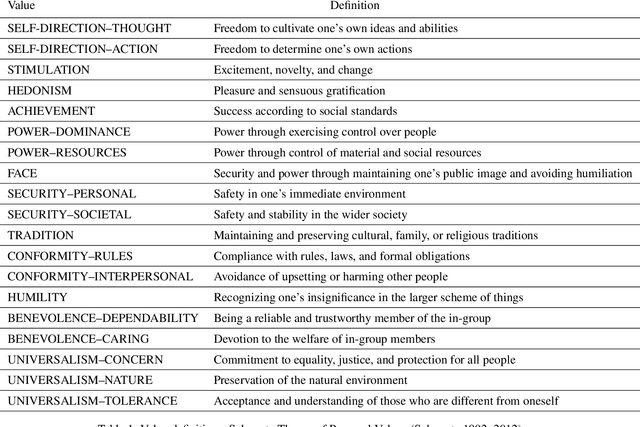
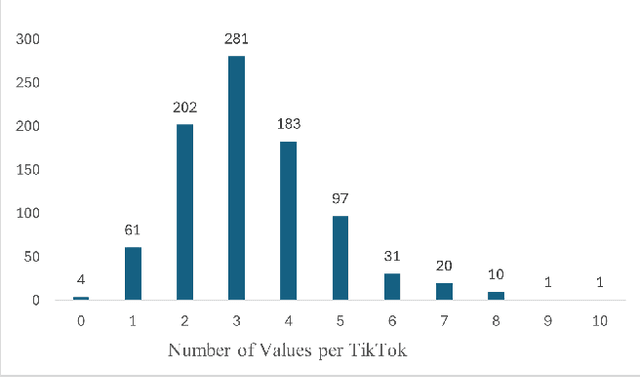
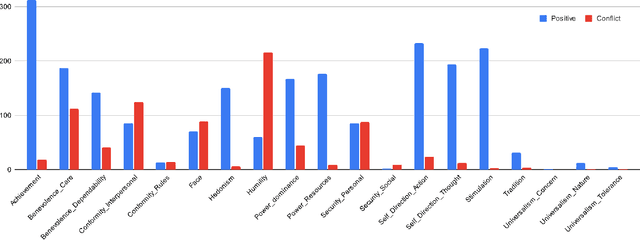
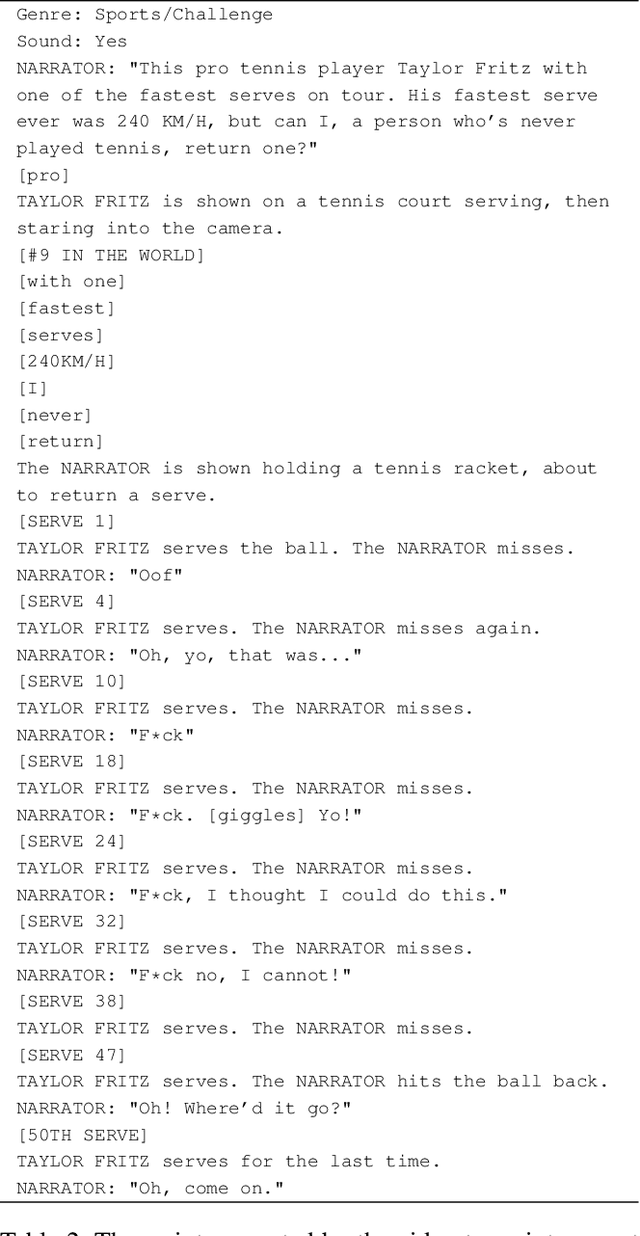
Abstract:Societal and personal values are transmitted to younger generations through interaction and exposure. Traditionally, children and adolescents learned values from parents, educators, or peers. Nowadays, social platforms serve as a significant channel through which youth (and adults) consume information, as the main medium of entertainment, and possibly the medium through which they learn different values. In this paper we extract implicit values from TikTok movies uploaded by online influencers targeting children and adolescents. We curated a dataset of hundreds of TikTok movies and annotated them according to the Schwartz Theory of Personal Values. We then experimented with an array of Masked and Large language model, exploring how values can be detected. Specifically, we considered two pipelines -- direct extraction of values from video and a 2-step approach in which videos are first converted to elaborated scripts and then values are extracted. Achieving state-of-the-art results, we find that the 2-step approach performs significantly better than the direct approach and that using a trainable Masked Language Model as a second step significantly outperforms a few-shot application of a number of Large Language Models. We further discuss the impact of fine-tuning and compare the performance of the different models on identification of values present or contradicted in the TikTok. Finally, we share the first values-annotated dataset of TikTok videos. Our results pave the way to further research on influence and value transmission in video-based social platforms.
Acquired TASTE: Multimodal Stance Detection with Textual and Structural Embeddings
Dec 04, 2024Abstract:Stance detection plays a pivotal role in enabling an extensive range of downstream applications, from discourse parsing to tracing the spread of fake news and the denial of scientific facts. While most stance classification models rely on textual representation of the utterance in question, prior work has demonstrated the importance of the conversational context in stance detection. In this work we introduce TASTE -- a multimodal architecture for stance detection that harmoniously fuses Transformer-based content embedding with unsupervised structural embedding. Through the fine-tuning of a pretrained transformer and the amalgamation with social embedding via a Gated Residual Network (GRN) layer, our model adeptly captures the complex interplay between content and conversational structure in determining stance. TASTE achieves state-of-the-art results on common benchmarks, significantly outperforming an array of strong baselines. Comparative evaluations underscore the benefits of social grounding -- emphasizing the criticality of concurrently harnessing both content and structure for enhanced stance detection.
AggregHate: An Efficient Aggregative Approach for the Detection of Hatemongers on Social Platforms
Sep 22, 2024Abstract:Automatic detection of online hate speech serves as a crucial step in the detoxification of the online discourse. Moreover, accurate classification can promote a better understanding of the proliferation of hate as a social phenomenon. While most prior work focus on the detection of hateful utterances, we argue that focusing on the user level is as important, albeit challenging. In this paper we consider a multimodal aggregative approach for the detection of hate-mongers, taking into account the potentially hateful texts, user activity, and the user network. We evaluate our methods on three unique datasets X (Twitter), Gab, and Parler showing that a processing a user's texts in her social context significantly improves the detection of hate mongers, compared to previously used text and graph-based methods. Our method can be then used to improve the classification of coded messages, dog-whistling, and racial gas-lighting, as well as inform intervention measures. Moreover, our approach is highly efficient even for very large datasets and networks.
With Flying Colors: Predicting Community Success in Large-scale Collaborative Campaigns
Jul 18, 2023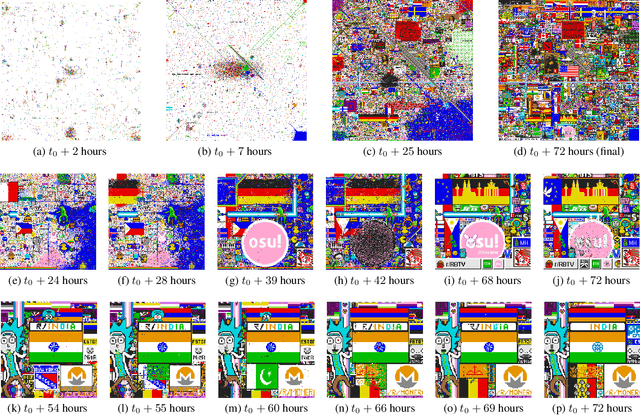

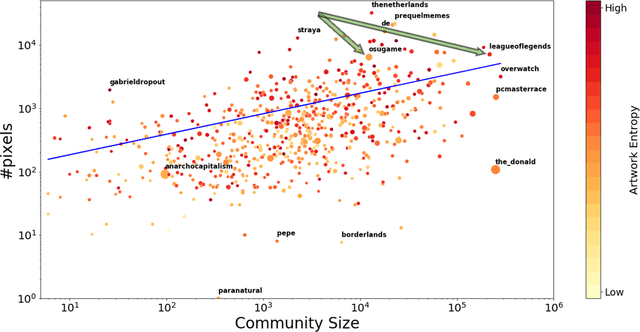

Abstract:Online communities develop unique characteristics, establish social norms, and exhibit distinct dynamics among their members. Activity in online communities often results in concrete ``off-line'' actions with a broad societal impact (e.g., political street protests and norms related to sexual misconduct). While community dynamics, information diffusion, and online collaborations have been widely studied in the past two decades, quantitative studies that measure the effectiveness of online communities in promoting their agenda are scarce. In this work, we study the correspondence between the effectiveness of a community, measured by its success level in a competitive online campaign, and the underlying dynamics between its members. To this end, we define a novel task: predicting the success level of online communities in Reddit's r/place - a large-scale distributed experiment that required collaboration between community members. We consider an array of definitions for success level; each is geared toward different aspects of collaborative achievement. We experiment with several hybrid models, combining various types of features. Our models significantly outperform all baseline models over all definitions of `success level'. Analysis of the results and the factors that contribute to the success of coordinated campaigns can provide a better understanding of the resilience or the vulnerability of communities to online social threats such as election interference or anti-science trends. We make all data used for this study publicly available for further research.
A Deeper Approach to Non-Convergent Discourse Parsing
May 21, 2023Abstract:Online social platforms provide a bustling arena for information-sharing and for multi-party discussions. Various frameworks for dialogic discourse parsing were developed and used for the processing of discussions and for predicting the productivity of a dialogue. However, most of these frameworks are not suitable for the analysis of contentious discussions that are commonplace in many online platforms. A novel multi-label scheme for contentious dialog parsing was recently introduced by Zakharov et al. (2021). While the schema is well developed, the computational approach they provide is both naive and inefficient, as a different model (architecture) using a different representation of the input, is trained for each of the 31 tags in the annotation scheme. Moreover, all their models assume full knowledge of label collocations and context, which is unlikely in any realistic setting. In this work, we present a unified model for Non-Convergent Discourse Parsing that does not require any additional input other than the previous dialog utterances. We fine-tuned a RoBERTa backbone, combining embeddings of the utterance, the context and the labels through GRN layers and an asymmetric loss function. Overall, our model achieves results comparable with SOTA, without using label collocation and without training a unique architecture/model for each label.
Detecting Suicide Risk in Online Counseling Services: A Study in a Low-Resource Language
Sep 11, 2022
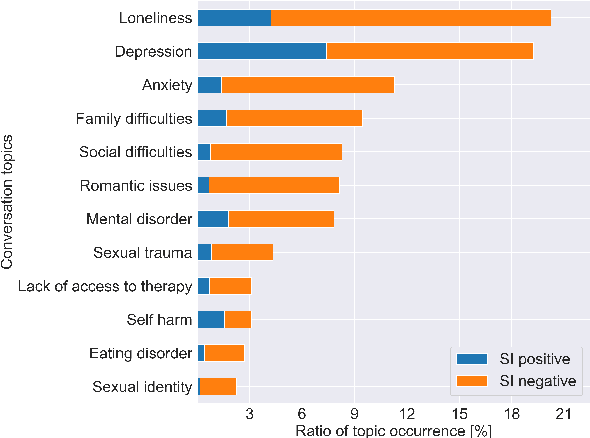


Abstract:With the increased awareness of situations of mental crisis and their societal impact, online services providing emergency support are becoming commonplace in many countries. Computational models, trained on discussions between help-seekers and providers, can support suicide prevention by identifying at-risk individuals. However, the lack of domain-specific models, especially in low-resource languages, poses a significant challenge for the automatic detection of suicide risk. We propose a model that combines pre-trained language models (PLM) with a fixed set of manually crafted (and clinically approved) set of suicidal cues, followed by a two-stage fine-tuning process. Our model achieves 0.91 ROC-AUC and an F2-score of 0.55, significantly outperforming an array of strong baselines even early on in the conversation, which is critical for real-time detection in the field. Moreover, the model performs well across genders and age groups.
This Must Be the Place: Predicting Engagement of Online Communities in a Large-scale Distributed Campaign
Feb 06, 2022

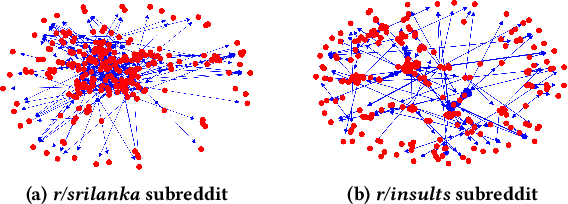
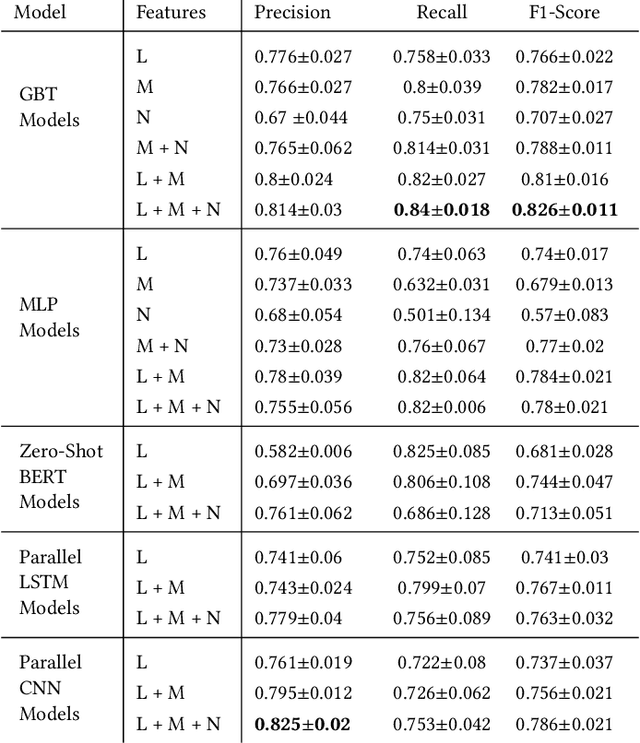
Abstract:Understanding collective decision making at a large-scale, and elucidating how community organization and community dynamics shape collective behavior are at the heart of social science research. In this work we study the behavior of thousands of communities with millions of active members. We define a novel task: predicting which community will undertake an unexpected, large-scale, distributed campaign. To this end, we develop a hybrid model, combining textual cues, community meta-data, and structural properties. We show how this multi-faceted model can accurately predict large-scale collective decision-making in a distributed environment. We demonstrate the applicability of our model through Reddit's r/place - a large-scale online experiment in which millions of users, self-organized in thousands of communities, clashed and collaborated in an effort to realize their agenda. Our hybrid model achieves a high F1 prediction score of 0.826. We find that coarse meta-features are as important for prediction accuracy as fine-grained textual cues, while explicit structural features play a smaller role. Interpreting our model, we provide and support various social insights about the unique characteristics of the communities that participated in the \r/place experiment. Our results and analysis shed light on the complex social dynamics that drive collective behavior, and on the factors that propel user coordination. The scale and the unique conditions of the \rp~experiment suggest that our findings may apply in broader contexts, such as online activism, (countering) the spread of hate speech and reducing political polarization. The broader applicability of the model is demonstrated through an extensive analysis of the WallStreetBets community, their role in r/place and four years later, in the GameStop short squeeze campaign of 2021.
Going Extreme: Comparative Analysis of Hate Speech in Parler and Gab
Jan 27, 2022

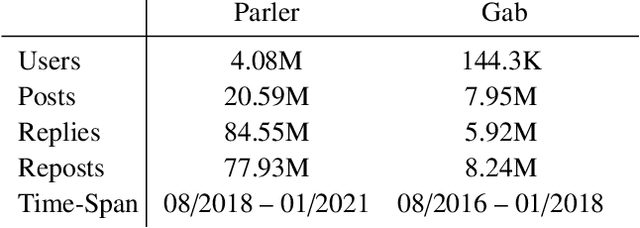
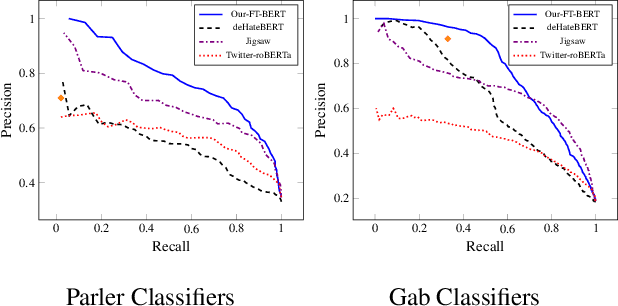
Abstract:Social platforms such as Gab and Parler, branded as `free-speech' networks, have seen a significant growth of their user base in recent years. This popularity is mainly attributed to the stricter moderation enforced by mainstream platforms such as Twitter, Facebook, and Reddit. In this work we provide the first large scale analysis of hate-speech on Parler. We experiment with an array of algorithms for hate-speech detection, demonstrating limitations of transfer learning in that domain, given the illusive and ever changing nature of the ways hate-speech is delivered. In order to improve classification accuracy we annotated 10K Parler posts, which we use to fine-tune a BERT classifier. Classification of individual posts is then leveraged for the classification of millions of users via label propagation over the social network. Classifying users by their propensity to disseminate hate, we find that hate mongers make 16.1\% of Parler active users, and that they have distinct characteristics comparing to other user groups. We find that hate mongers are more active, more central and express distinct levels of sentiment and convey a distinct array of emotions like anger and sadness. We further complement our analysis by comparing the trends discovered in Parler and those found in Gab. To the best of our knowledge, this is among the first works to analyze hate speech in Parler in a quantitative manner and on the user level, and the first annotated dataset to be made available to the community.
STEM: Unsupervised STructural EMbedding for Stance Detection
Dec 20, 2021
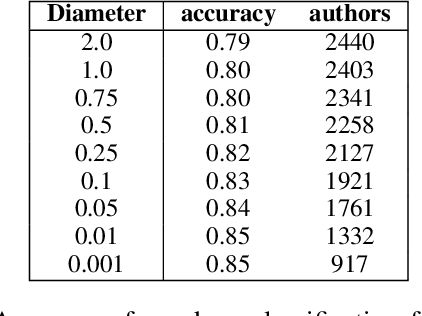
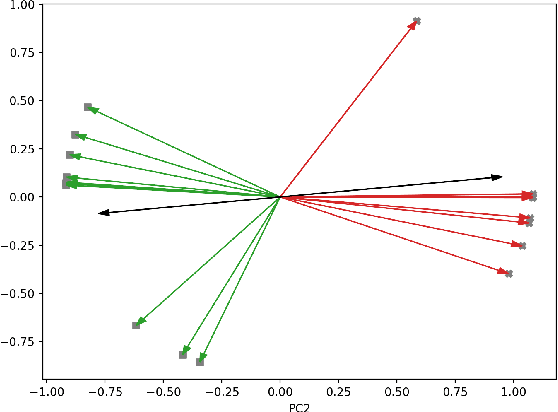
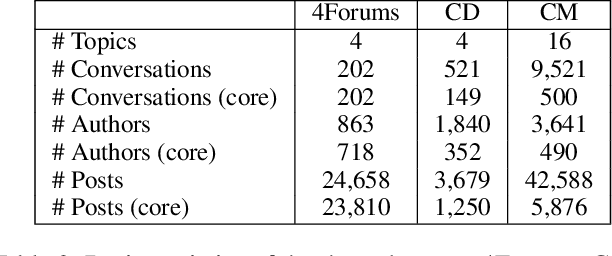
Abstract:Stance detection is an important task, supporting many downstream tasks such as discourse parsing and modeling the propagation of fake news, rumors, and science denial. In this paper, we propose a novel framework for stance detection. Our framework is unsupervised and domain-independent. Given a claim and a multi-participant discussion - we construct the interaction network from which we derive topological embedding for each speaker. These speaker embedding enjoy the following property: speakers with the same stance tend to be represented by similar vectors, while antipodal vectors represent speakers with opposing stances. These embedding are then used to divide the speakers into stance-partitions. We evaluate our method on three different datasets from different platforms. Our method outperforms or is comparable with supervised models while providing confidence levels for its output. Furthermore, we demonstrate how the structural embedding relate to the valence expressed by the speakers. Finally, we discuss some limitations inherent to the framework.
 Add to Chrome
Add to Chrome Add to Firefox
Add to Firefox Add to Edge
Add to Edge